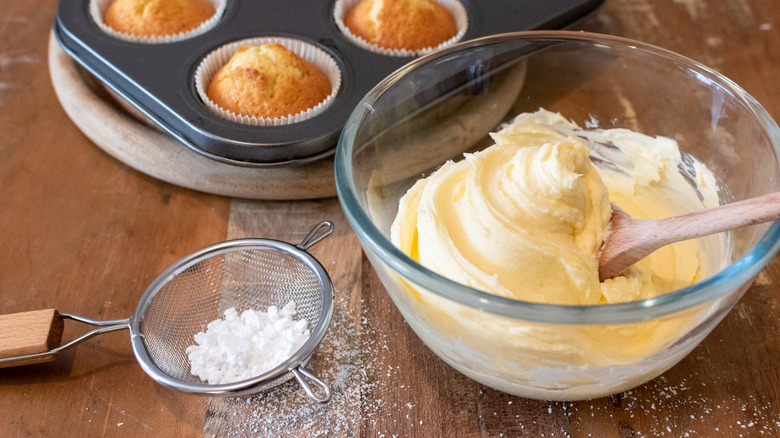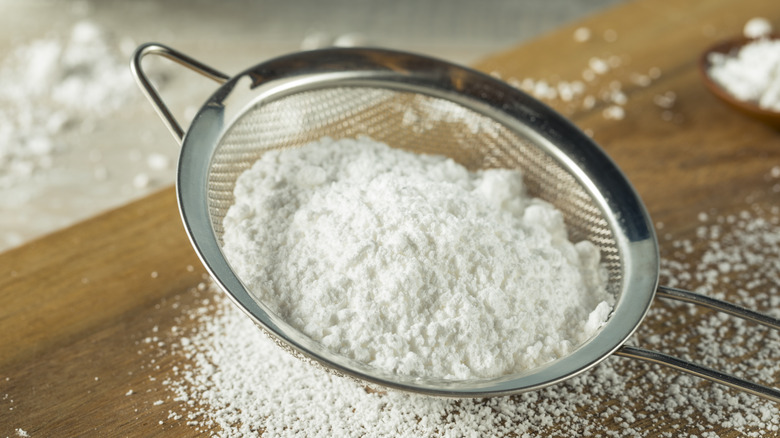The Reason Your Buttercream Frosting Is Grainy
What is cake without frosting? The words "boring," "sad," and "unsatisfying" come to mind. We began frosting our cakes during the 18th century and never looked back (via Bakerpedia). Now, eating a completely naked cake feels wrong. You can, of course, ice your cake with a thin glaze instead of using a traditional fluffy topping, but for some reason, we are completely enamored with buttercream. People will even fight over their favorite kinds of frostings. Some people prefer a light, whipped meringue and others love a heavy cream cheese base. But typically, the most popular frosting across the board is buttercream.
Buttercream frosting is made of confectioners' sugar (aka powdered sugar), softened butter, vanilla, and whipping cream (via Food Network). And though it sounds simple enough to make, buttercream frosting does have a habit of becoming stodgy. So, when making the tasty topping, it's important to know where you could go wrong.
Sugar is the culprit
There are some recipes where you can switch out different kinds of sugar and get a great result, but buttercream frosting is not one of them. According to The Kitchn, if you use basic granulated sugar in place of powdered sugar for this recipe, you'll be in for quite the shock. Buttercream frosting is known to be super smooth and, well, creamy. And this texture is reliant on the smooth blending of confectioners' sugar — which is a fine powder — and the butter. If you replace it with granulated sugar, which as the name suggests, is grainy, you will end up with an unappetizing, gritty frosting.
And if you do use powdered sugar in your frosting, be sure to always sift it. Confectioners' sugar has cornstarch in it, which absorbs liquids and can cause lumps in the frosting (via Baking Nook). To prevent this from happening, sift your powdered sugar thoroughly, even twice if you have to. This will help to ensure a smooth buttercream frosting.

